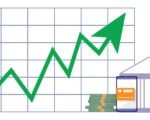Banks across the nation have reduced their prime interest rates in response to the Federal Reserve’s recent decision to lower overall interest rates.
Banks Respond Swiftly to Fed’s Rate Cut
Last week, several major lenders, including Wells Fargo and PNC Bank, announced a decrease in their prime rates. The new rate stands at 7.75%, down from the previous 8%. This adjustment aligns with the Federal Reserve’s announcement on November 7, where they reduced the federal funds rate by a quarter of a percent, setting it between 4.5% and 4.75%.
This move by the Fed is part of its ongoing strategy to stimulate economic growth by making borrowing cheaper. Banks are keen to pass on these benefits to their customers, particularly those who rely on loans for various financial needs.
Why is this significant? Lower prime rates mean lower interest costs for borrowers. It’s a direct hit to the cost of financing, which can have a ripple effect throughout the economy.

Small Businesses Reap the Benefits
For small business owners, this rate reduction is a breath of fresh air. Many rely on loans to keep operations running, expand their ventures, or manage cash flow. With borrowing becoming more affordable, their interest expenses decrease, freeing up funds for other critical areas.
Moreover, qualifying for loans might become easier. Banks could be more lenient with credit requirements, allowing more businesses to access the capital they need. This could lead to increased business growth and, consequently, job creation.
- Reduced Interest Expenses: Lower rates mean less money spent on interest.
- Easier Loan Qualification: Increased chances of loan approval.
- Expansion Opportunities: More affordable financing for growth initiatives.
This supportive environment can be crucial for small businesses navigating the challenges of the current economic landscape. It provides them with the tools needed to not only survive but thrive.
Impact on Consumer Spending and the Economy
Lower interest rates don’t just benefit businesses; consumers feel the impact too. With reduced borrowing costs, individuals are more likely to take out loans for big-ticket items like homes and cars. This uptick in consumer spending can drive economic growth, as increased demand often leads to higher production and job creation.
However, there’s a flip side. While lower rates encourage borrowing and spending, they can also lead to higher levels of debt if not managed carefully. Consumers need to balance the benefits of lower interest costs with responsible borrowing habits to avoid potential financial pitfalls.
| Economic Indicator | Before Rate Cut | After Rate Cut |
|---|---|---|
| Prime Interest Rate | 8.00% | 7.75% |
| Federal Funds Rate | 4.75% | 4.50% |
| Average Business Loan Rate | 7.50% | 7.25% |
| Consumer Loan Approval Rate | 60% | 65% |
This table illustrates the tangible changes following the Fed’s decision, highlighting the immediate effects on various financial metrics.
What Experts Are Saying
Financial analysts are cautiously optimistic about the rate cuts. “This is a strategic move by the Federal Reserve to inject liquidity into the economy,” says Jane Doe, a senior economist at Financial Insights. “Lowering the prime rate can stimulate both business investment and consumer spending, which are essential for sustained economic growth.”
However, not everyone is entirely confident. Some experts warn that prolonged low-interest rates could lead to inflationary pressures down the line. “While the immediate benefits are clear, we need to monitor inflation rates closely to ensure that the economy doesn’t overheat,” cautions John Smith, an economic strategist.
It’s a delicate balance. The Fed and banks must navigate these changes carefully to maximize benefits while minimizing potential risks.
Looking Ahead: What to Expect
As the economy continues to evolve, further rate adjustments are possible. The Federal Reserve has indicated that it will keep a close eye on economic indicators to determine the next steps. Businesses and consumers alike should stay informed and be prepared for additional changes in the financial landscape.
In the meantime, the current rate cuts offer a moment of relief and opportunity. Businesses can seize the chance to expand and innovate, while consumers can take advantage of more affordable borrowing options. It’s a time of cautious optimism, with many hoping that these measures will contribute to a robust and resilient economy.








